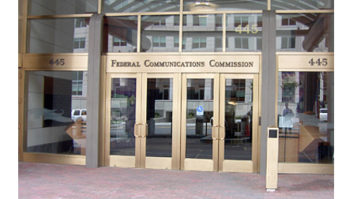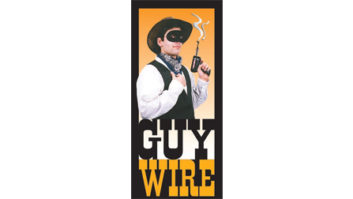How far should the FCC go to protect “AM anchor stations” in the United States while trying to help the band’s other operators?
iHeartMedia doesn’t want the FCC to change nighttime skywave protections for big Class A stations, of which it owns 17 across the country. Most of these stations operate on clear channels with 50 kW power non-directional full-time. A change in nighttime skywave rules could let smaller stations boost power, a change that might benefit them but eat into the effectiveness of big “boomers” that have long enjoyed great geographic reach far beyond their cities of license.
Whether the commission is close to adopting such a change is unclear; iHeart’s ongoing press at the FCC could be read to mean that it thinks such action is pending, or maybe the company is simply making a preemptive strike against a remote possibility that was mentioned in passing in the NPRM. But its efforts provide another window into ongoing debate in the halls of power about how to “revitalize” the band.
According to an FCC filing, Sara Morris, senior director of government affairs for iHeartCommunications, recently spoke with Maria Kirby, legal advisor to Chairman Tom Wheeler, about the FCC’s consideration of possible changes to nighttime skywave protections. Continuing the company’s lobbying on this topic, she reiterated iHeart’s “serious concerns about the harm to actual listeners,” including people in rural and remote areas, that may result if the commission reduces Class A skywave protection to Class B status.
She reminded Wheeler’s aide of an iHeart analysis that identified more than a half-million existing listeners of Class A stations, “accounting for 13 million listening hours per month,” who would lose existing service. “Moreover, the AM stations that would be most impacted by an abrupt dimunition of interference protection are the very stations that have served to attract and retain listeners on the AM band, similar to the way an anchor commercial tenant in a retail development serves the critical role of attracting and retaining customers, thus promoting overall community development.”
Morris repeated iHeart’s theme that the commission should “do no harm” and argued that a change in nighttime skywave protections “runs directly counter to this goal.” This echoed arguments that the company has brought to bear in previous conversations at the FCC and elsewhere.
In a letter summarizing the Sept. 29 conversation, iHeart also listed questions it wants the commission to try to answer. The following bullet points, comprising a total of 17 questions, are quoted directly from the letter:
-To what extent do listeners go to the AM band to receive content from Class A AM stations? Would a reduction in Class A nighttime interference protections result in existing listeners of the AM band leaving the service due to increased interference, thereby further weakening the AM band and the ability of all AM stations to attract listeners? To what extent to Class A AM listeners also listen to non-Class A AM stations once they are tuned in to the AM dial? Will dimunition of AM “anchor stations” have an overall chilling effect on the AM band?
-To what extent does increased interference for Class A AM stations impact EAS Primary Entry Point stations for Department of Homeland Security/FEMA alerts during emergencies?
-What would be the effect on non-Class A AM stations that do not increase power on their ability to reach existing listeners, including their ability to provide local programming, public service information and EAS notifications? Are listeners in rural, remote and/or tribal areas disproportionately impacted?
-What are the potential number of actual listeners who would lose access to an AM station signal if changes to nighttime interference protections were adopted?
-Would listeners in rural or remove and/or tribal areas lose access to nighttime news, information and sports that they currently receive?
-Would Class A nighttime interference protection changes undermine the ability of these AM stations to continue to broadcast radio programming content serving the public interest, such as news?
-What would be the impact of nighttime interference protection reductions on Class A AM stations that qualify as small businesses?
-Would the rationale for modifying skywave protections remain valid if the commission provides new opportunities for AM stations to increase listenership through increased access to FM translators?
-Would power increases in nighttime coverage for Class B & D AM stations increase noise in the band overall? To what extent would such an increase in overall noise/interference negate any benefit from such power increases? To what extent would Class B & D AM stations that do not increase power be impacted by increased interference from those stations that do increase power on the same channel? Would any of these impacted stations be Small Business Entities? Would this increased interference impact the ability of stations to perform EAS functions?











